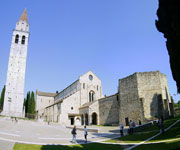Cilento and Vallo di Diano National Park with the Archeological sites of Paestum and Velia, and the Certosa di Padula; The Cilento is an outstanding cultural landscape. The dramatic groups of sanctuaries and settlements along its three east–west mountain ridges vividly portray the area's historical evolution: it was a major route not only for trade, but also for cultural and political interaction during the prehistoric and medieval periods. The Cilento was also the boundary between the Greek colonies of Magna Graecia and the indigenous Etruscan and Lucanian peoples. The remains of two major cities from classical times, Paestum and Velia, are found there.

Continent: Europe
Country: Italy
Category: Cultural
Criterion: (III)(IV)
Date of Inscription: 1998
Cultural landscape
During the prehistoric period, and again in the middle Ages, the Cilento region served as a key route for cultural, political, and commercial communications in an exceptional manner, utilizing the crests of the mountain chains running east-west and thereby creating a cultural landscape of outstanding significance and quality. In two key episodes in the development of human societies in the Mediterranean region, the Cilento area provided the only viable means of communication between the Adriatic and the Tyrrhenian seas, in the central Mediterranean region, and this is vividly illustrated by the relict cultural landscape of today.










No comments:
Post a Comment